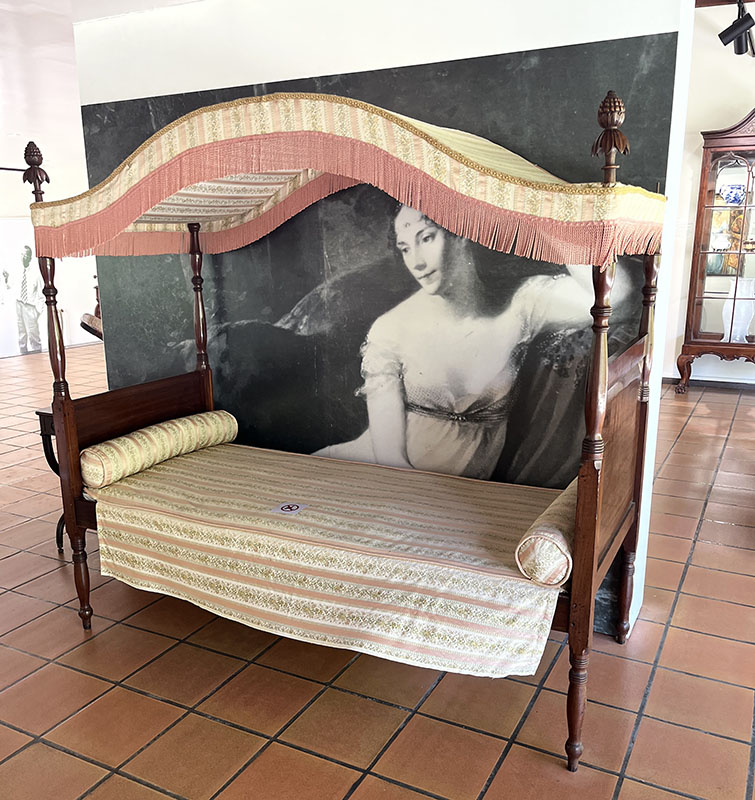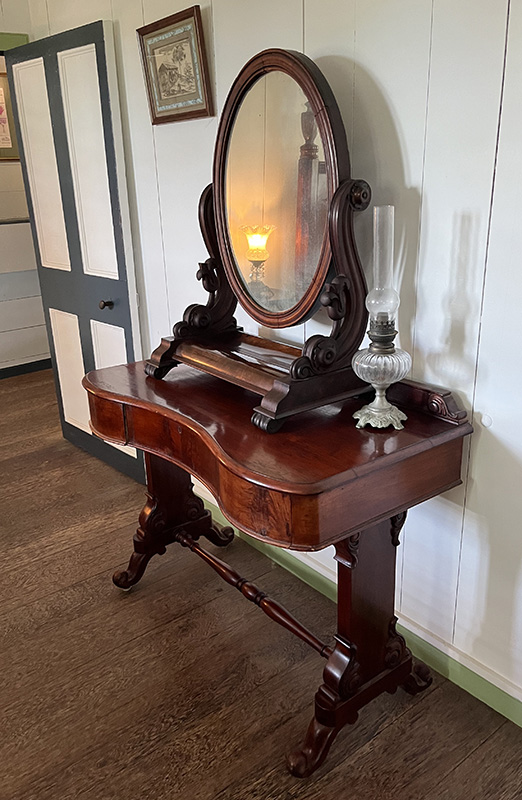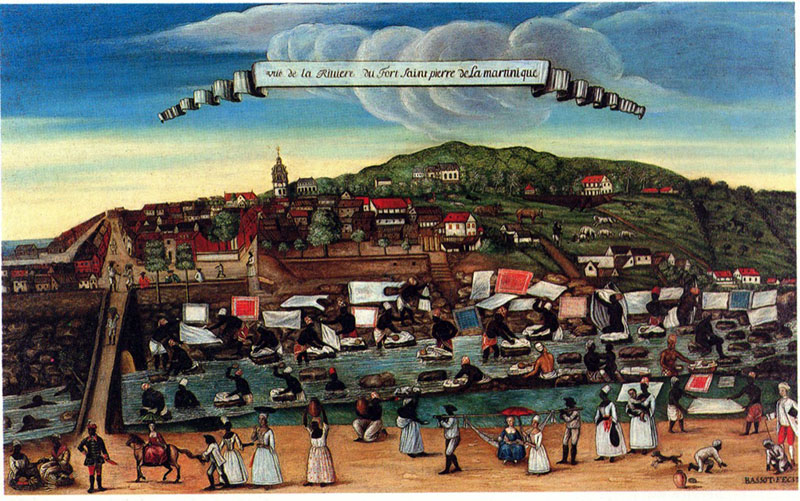Race, Gender, and Materiality in 18th-century Martinique and Guadeloupe
by Dani Ezor
A Research Grant from the Decorative Arts Trust funded travel to Martinique and Guadeloupe. My dissertation explores how the 18th-century toilette table actively constructs white femininity in France and its Caribbean colonies, often at the expense of forced Black labor. Traveling to Martinique and Guadeloupe was central to my dissertation research, as the material history of these French Caribbean colonies in the 18th century is largely unwritten, and specificities are frequently absent from the archival record. In Martinique and Guadeloupe, I was looking for toilette objects, furniture, and Martiniquais depictions of interiors from the 18th century, more specifically those made from tropical hardwoods, porcelain, silver, and/or lacquer.
One such object was Empress Joséphine’s childhood bed (figure 1), which is made of courbaril, a local hardwood often used for furniture. Examining an object from Joséphine’s childhood contextualizes her furniture commissions during and after the French Revolution.
I also visited the Habitation Clément, which is one of the few standing plantation homes built in the 18th century (albeit expanded twice over the 19th and early 20th centuries). It houses original furnishings from this time period, including various silver coffee pots, tropical hardwood tables with marquetry details, and mahogany sideboards. The house was also home to a 19th-century toilette table (figure 2), which speaks to the pervasive toilette culture that was present in the society of the Martiniquais békés (wealthy, white landowners whose money came from enslavement and exploitation).
Another important find was archeological evidence of Chinese porcelain at la Caravelle, the main plantation of the Dubuc family, the same family of the woman at the toilette in the painting that guides much of the French Caribbean elements: Marius Pierre Le Masurier’s Portrait of the Choiseul-Meuse Family (c. 1775, Musée d’Aquitaine, Bordeaux), which was painted in Martinique and is the only toilette portrait from Martinique prior to the French Revolution. Although the plantation house no longer stands, the Dubuc family was one of the most influential on the island. This plantation, with its secluded private bay, was a known location for illegal trade either with pirates or with merchants from Spanish colonies. This trade was purposefully undocumented but was likely the primary route for luxury Asian goods, such as porcelain and lacquer, arriving in Martinique. Physical evidence of Chinese porcelain is thrilling.
I also viewed the painting View of the Fort Saint Pierre River in Martinique (figure 3) by the artist known only as Bassot, which is the earliest known painting in the Western style made in Martinique. It depicts laundresses cleaning textiles, mostly white textiles but also madras cloth, and demonstrates social interactions and relations between white, mixed race, and Black women in 18th-century Martinique. Other elements of my research in Martinique and Guadeloupe included visits to local antiques dealers, to additional plantation homes, and to museums focusing on sugar, slavery, paintings, and pre-Columbian works of art in the French Antilles.
This trip had an enormous effect on my research and allowed me to finish my dissertation. In addition to confirming theories about material culture and the decorative arts in the French Caribbean, it also allowed me to understand the environment and the culture that I am researching in more detail. My visit also confirmed for me the importance of textiles in the history of Martinique, which has become an additional chapter in my first book project. I also added more information about the genocide and destruction of Indigenous peoples and their lands into my dissertation chapter on tropical hardwood.
Central to any art historian’s work, seeing objects in person was necessary for me to discuss them in my dissertation. I was also able to connect with a local art historian who works on Martiniquais painting in the 18th and 19th centuries, who was an extraordinary resource. Finally, and perhaps most consequentially, I learned much more about the history of resistance to slavery and colonialism and how the local population still wrestles with this difficult past—and with being a French territory in the present—through protest, art, culture, and public memorial.
Dani Ezor is a Visiting Assistant Professor of Art History at Kenyon College. She obtained her PhD in Art History from the Meadows School of the Arts, Southern Methodist University in 2023.
About The Decorative Arts Trust Bulletin
Formerly known as the "blog,” the Bulletin features new research and scholarship, travelogues, book reviews, and museum and gallery exhibitions. The Bulletin complements The Magazine of the Decorative Arts Trust, our biannual members publication.
Click Images to Enlarge
Did you know that clicking on the images in Bulletin posts will allow you to get a closer look? Simply click on an image, and a larger version will open in a pop-up window.










